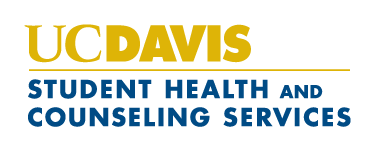Do you want to add more movement to your day, but don’t know where to start? You’re not alone! There is a lot of information about physical activity/exercise/movement, whatever you prefer to call it, and it gets hard determine fact from fiction. But, movement doesn’t have to be complicated! To get started, ask yourself these three questions:
How do I enjoy moving my body?
Forcing yourself to move your body in a way you don’t enjoy will feel more like an assignment that you dread instead of something that excites you. Find movement that makes you happy and you look forward to doing, because you are more likely to continue it long term. Not sure what you would enjoy? Here are some campus resources to help you find movement that works for you:
How much time do I have to be active?
It’s helpful to schedule time to move your body, just like you schedule your classes and work. You are making a commitment to yourself to dedicate a specific part of your day to improving your health and well-being. You can schedule a 30-60 minute chunk of time or break up your movement into smaller bouts throughout the day.
If scheduling a time to be active doesn’t work for you, then think of ways you can stay active throughout the day by adding in small, frequent movement breaks. Ask yourself, how can I move more throughout the day? Here are some tips to move more throughout your day:
Stand or stretch every hour during a long study session. Set alarms on your phone to remind you take movement breaks.
Use breaks in between and during classes to take walks
Take your coffee and go for a walk with a friend instead of sitting at a cafe
Take the stairs instead of an elevator, if you’re able
Bike or walk to class
Get off the bus one stop earlier and walk the rest of the way
Go for a walk to call a friend or family member
Do a quick workout video while you wait for dinner to cook
What level of movement am I comfortable with?
Movement ranges from a leisurely walk to competing in an athletic event. Your comfort level is unique to your experiences and goals. If you haven’t been very active before, it’s best to start slow. Small changes can make a big impact. Moving more can reduce health issues and stress, increase productivity, and contribute to your overall well-being. By starting small and setting reasonable goals, you can ensure that movement becomes part of your daily routine.
Ways To Be Active
Moderate Intensity Activity
Moderate intensity activity is a good option for everyone, and it is especially beneficial for those just starting to add more activity to their life. When doing moderate-intensity activity, you can talk but not sing. Your heart rate is elevated and you’ll get a little sweaty, but you aren’t out of breath. Try the following moderate-intensity options:
- Bike riding
- Golfing
- Playing Frisbee
- Washing your car
- Gardening
- Quickly walking
- Yoga
Vigorous Intensity Activity
This is what running or dancing feels like – you find it hard to say more than a few words without pausing for breath. Your heart rate has noticeably increased and you will be quite sweaty. Try the following vigorous-intensity options:
- Kickboxing
- Swimming continuous laps
- Running
- Playing basketball
- Hiking
- Dancing
- Interval or circuit training
Strength Training
Strength training involves activities that make your muscles do more work than they usually do. Strength training is important, because it:
- Improves your bone mass and strength
- Improves balance and mental health
- Enhances posture
- Makes daily activities like carrying groceries easier
- Decreases chance of injury
- Prevents chronic diseases.
For maximum health benefits, it’s best to perform muscle strengthening activities two or more days per week, and to involve all major muscle groups like your legs, hips, back, abdomen, chest, shoulders, and arms.
No strength training method is better than another. You can use machines, dumbbells, barbells, resistance bands and even your own bodyweight! The strength training method(s) you decide on may depend on personal preference, access and availability, convenience, and comfort level. It's important to choose methods that are safe and practical for you. Machine-based exercises are generally safer for beginners than free weights because machines are more stable and rely less on coordination and balance.
Here are some tips for strength training:
- Learn from others by using Campus Recreation’s resources like small group training
- Use proper form and technique. Checkout the ACE Exercise Library for easy to access instructions on how to do hundreds of movements.
- Use proper breathing techniques (exhale during the working part of a movement, like when you’re pushing yourself off the ground in a push-up or standing out of a squat).
Stretching & Flexibility
Stretching and flexibility activities are a great addition to an active lifestyle. They improve circulation and range of motion, decrease joint stiffness and muscle tension, enhance performance, and can lead to better posture. Try to stretch 2-3 days per week for at least 10 minutes each day and involve all of the major muscle tendon groups. Major muscle tendon groups include: neck, shoulders, upper and lower back, pelvis, hips, and legs.
Here are some tips for stretching:
- Do slow, circular movements both clockwise and counterclockwise (e.g., Wrist circles, arm circles, hip circles, head rolls, shoulder rolls, etc.)
- Add some stretches where you hold the pose for 30-45 seconds (ex: toe touches, hamstring stretch, arm overhead stretch, calf stretch, etc.)
- Don’t wiggle around or bounce your muscles while you’re stretching. This interferes with the stretch and can lead to injury.
- Gradually increase range of motion and reach each time.
- Breath while you stretch! Breathing increases blood flow and the amount of oxygen delivered to the muscles.



